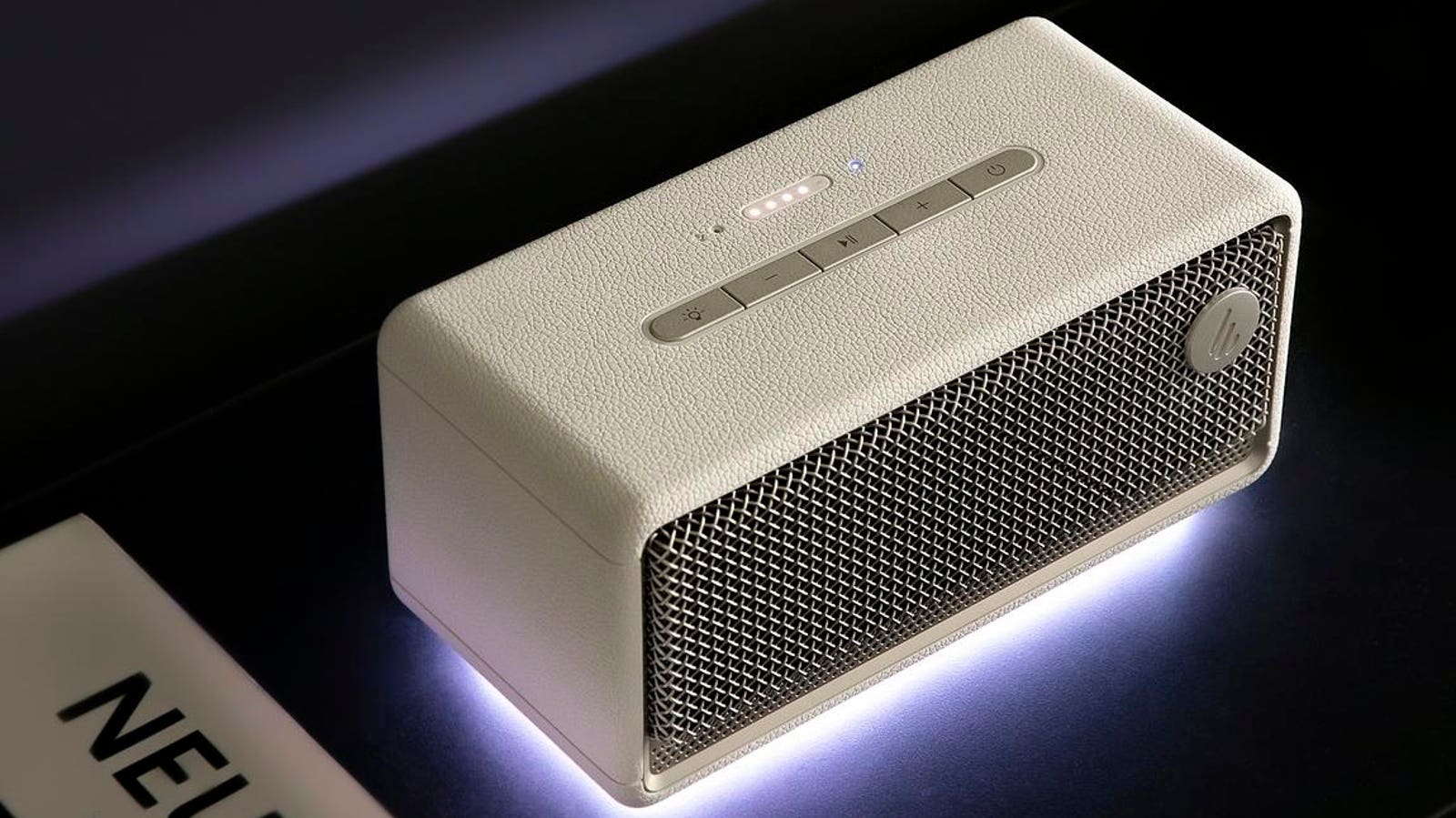Elon Musk’s Neuralink is among a handful of leading companies developing brain-computer interfaces (BCI).
Getty Images
We stand at the cusp of a massive technology paradigm shift that promises to transform human civilization. Sam Altman and Elon Musk are building rival companies to compete over what will be one of the biggest market opportunities in history.
No, we are not talking about generative AI. We are not talking about OpenAI and xAI.
We are talking about brain-computer interfaces.
Musk’s Neuralink and Altman’s newly launched Merge Labs are among a handful of companies at the forefront of this fast-moving field.
To most people, brain-computer interfaces (BCI) sound like science fiction. But this technology is getting real, quickly. BCI is nearing an inflection point in terms of real-world functionality, though most people haven’t yet realized it. Before long, these products will be ready for mainstream use and will begin to spread through society. Far-fetched though it may sound, capabilities like telepathy will soon be possible.
One reason why BCI matters so much is that it will play a central role in defining how human intelligence and artificial intelligence fit together in a world with powerful AI.
Now is the time to start paying serious attention to this field.
The Trillion Dollar Question: Invasive Versus Non-Invasive BCI
Brain-computer interfaces are technologies that enable humans to interact directly with digital devices and the outside world using their minds.
BCI is not one product or one technology. It is an entire discipline, encompassing various technical approaches, sensor types, capabilities and use cases. It includes both technologies that can interpret what is happening in the brain (i.e., ”read from” the brain) and technologies that can change what is happening in the brain (i.e., “write to” the brain).
Products that enable you to control your computer using only your thoughts; products that send personalized electrical pulses to your brain to make you focus better or sleep better; products that can instantly translate your thoughts into written text; products that can enable blind people to see; products that can treat conditions like depression or OCD or PTSD by directly modifying your brain’s activity—these are all examples of BCI products under development today.
BCI is not a new field. The first successful demonstration of a brain-computer interface in a human came in 1973, when participants in a UCLA study directly controlled a cursor on a computer screen with their minds based on EEG signals.
Today, when most people think of brain-computer interfaces, they think of Neuralink, the BCI company launched by Elon Musk in 2016. Though it was not the first and is not the only BCI startup, Neuralink has played a central role in advancing this field in recent years.
A fundamental divide lies at the heart of the field of BCI: invasive methods versus non-invasive methods. In order to understand this technology and its future, it is essential to understand this divide.
Invasive approaches to BCI entail putting electronics inside the skull, directly in or on the brain. They require surgery. Most frequently the surgery is a craniotonomy, which involves cutting open the skull to implant a BCI in the brain. Neuralink is the most well-known example of an invasive BCI company.
(The term “implantable” is sometimes used as a more neutral alternative to “invasive.”)
Non-invasive approaches, on the other hand, do not require a medical procedure. They rely on sensors that sit outside the skull (say, on a headband or a hat) to collect and interpret signals from the brain.
The divide between invasive and non-invasive methods boils down to a tradeoff between accessibility (how easy the technology is for people to use) and signal quality (how detailed and accurate the information exchanged between brain and computer can be).
Cutting open the skull to implant a BCI in the brain is a high-risk, high-cost undertaking. It represents a major barrier to the technology’s widespread adoption. But conventional wisdom has long held that invasive methods are the only path to building the most sophisticated brain-computer interfaces, because non-invasive approaches simply cannot provide sufficiently high-fidelity information about brain activity.
In recent years, innovations in hardware and in AI have begun to challenge this conventional wisdom. Higher-performing sensors are unlocking richer brain data non-invasively. More importantly, powerful new AI technologies are making it possible to extract greater signal from this data.
If non-invasive methods can approach parity in performance with invasive methods, there is little doubt that they will win out, given how much easier they are to adopt. But that remains a huge “if.” No one can say with certainty where the performance ceiling will be for non-invasive methods.
Many billions of dollars have been invested into both invasive and non-invasive BCI approaches in recent years. Much is at stake as this technology race unfolds over the coming years.
Decoding the Brain
Whether invasive or non-invasive, how exactly do brain-computer interfaces work? How is it possible for a digital computer to directly read from and write to a human brain?
A quick exploration of how the brain works will sharpen our understanding of BCI technology.
Like the rest of your body, your brain is made up of cells—in particular, a special kind of cell called a neuron. The human brain consists of roughly 86 billion neurons. These neurons connect to one another in complex and intertwining ways, with any given neuron connecting to as many as tens of thousands of other neurons. (Hence the term “neural network.”) In total, there are over 100 trillion connections between neurons in the human brain.
Information flows through the neurons in your brain via electricity—the same force that powers kitchen appliances and lightbulbs and iPhones. This basic fact is the foundation of BCI technology.
Whenever your brain does something—for instance, when you think a thought, or speak a sentence, or move your arm, or recognize a face—your neurons are sending electrical signals to one another, at massive scale, in particular patterns.
At the most basic level, the information that a neuron communicates is binary: either it fires (i.e., propagates an electrical charge to its neighboring neuron) or it does not. This represents an important parallel between human brains and digital computers, which also encode information in binary form (i.e., 0 or 1).
The electrical signal that comes from a single neuron firing is tiny: about a billionth of an amp and a tenth of a volt. But it is a concrete, detectable physical event in the world. And it triggers other detectable physical events in the world. For instance, because electricity and magnetism are two sides of the same underlying phenomenon—electromagnetism—when a neuron fires and generates a tiny electrical signal, it also generates a tiny magnetic field. Blood flow also increases to neurons when they fire, another physiological change whose patterns can be measured and analyzed.
It is these physical events that BCI sensors detect and interpret in order to decode what is happening inside the brain. A range of different BCI sensor technologies have been developed that tackle this challenge in different ways. Each has its advantages and disadvantages.
Invasive BCI systems generally use sensors called electrodes—simple devices that sense electrical activity—to detect when neurons fire. Invasive systems are in direct contact with neurons, after all, so they have little need to rely on indirect indicators of neural activity.
Non-invasive BCI, too, often uses sensors based on electricity, most commonly the electroencephalogram (EEG), the world’s oldest and most widely used brain sensor. But a number of other non-invasive sensor modalities have been developed more recently. These include magnetoencephalography (MEG), which detects changes in the brain’s magnetic fields, and functional near-infrared spectroscopy (fNIRS), which uses light beams to detect changes in blood flow in the brain.
The best way to understand the state of the art in BCI technology today is to explore what today’s leading BCI startups are doing. Let’s start on the invasive side.
The Invasive BCI Startup Landscape
In order to understand today’s invasive BCI startup landscape, the best place to start is with a brief history lesson.
The first BCI technology to be implanted into a human’s brain was the “Utah array,” developed at the University of Utah in the 1980s and implanted into humans in clinical trials starting in the 1990s.
The Utah array consists of a bed of 100 rigid needles measuring about one millimeter in length, each of which has an electrode at its tip. It looks like this:
The Utah array, developed in the 1980s, was the first BCI to be implanted into a human’s brain.
Source: ResearchGate
Implanting the Utah array entails cutting open the patient’s skull via a surgery called a crainiotomy and pushing the device into the patient’s brain.
The Utah array was an important breakthrough in the development of brain-computer interfaces. It was the first technology to enable a human to control external devices like a computer or a robotic arm purely by thought. For a long time, it represented the gold standard in invasive BCI research.
However, the Utah array also faces serious limitations that have precluded it from having widespread real-world clinical utility. Because it entails sticking a foreign object into brain tissue, it can activate a strong immune response, lead to scarring and inflammation, and disrupt the brain’s microbiome.
The best way to understand the Utah array’s shortcomings is through an important concept in BCI technology known (vividly) as the “butcher ratio”: the ratio of the number of neurons that a BCI technology kills relative to the number of neurons that it can record from. The Utah array has a terrible butcher ratio. For every one neuron that it can stably record from, it kills hundreds or thousands of neurons (because its needles pierce through them).
The first invasive BCI startups were based on the Utah array. This included Blackrock Neurotech (founded in 2008 as a spinout of the original University of Utah research) and Paradromics (founded in 2015).
Despite years of effort and hundreds of millions of dollars in funding, these companies have not had success in advancing their technologies into clinical trials, due largely to the shortcomings of the Utah array form factor. Last year, Tether (yes, the crypto company) acquired majority control of Blackrock Neurotech for $200 million.
Another early competitor is worth mentioning—Synchron, founded in 2012 in Australia. Synchron has taken a different and quite clever approach to getting electronics into the human brain.
Rather than cutting open the skull, Synchron has developed a BCI device that is inserted into a patient’s blood vessel. The device is then guided via the blood vessels to the brain, where it comes to rest in one of the major veins directly adjacent to the brain.
This surgical procedure is simpler than a crainiotomy. It is very similar to the procedure used to implant coronary stents, which for decades has been one of the most common procedures in all of medicine. And it avoids sticking a foreign object into brain tissue, meaning its butcher ratio is zero.
As a result, Synchron has made meaningful progress on the regulatory front. It was one of the first invasive BCI companies to receive FDA clearance to begin clinical trials. Its devices have been successfully implanted for years now in several patients with no serious adverse health effects.
Synchron has raised over $100 million from leading venture capital firms including Khosla Ventures and ARCH Venture Partners. Earlier this year, the company announced high-profile partnerships with Nvidia and with Apple.
But the same thing that makes Synchron’s approach safer and simpler may make it fundamentally limited. Because Synchron’s device does not directly interface with the brain’s neurons but rather sits inside a blood vessel next to the brain, the signals that it collects from the brain are less granular than other invasive methods. Synchron’s device is also meaningfully lower bandwidth than its competitors: it has only 16 electrodes (compared to, for example, Neuralink’s 1,024). And Synchron’s device can only “read from,” not “write to,” the brain.
To date, the primary capability that patients with Synchron’s device have demonstrated is the ability to complete a simple click on a computer with their thoughts. While this can be a useful capability for a paralyzed patient, it is a far cry from more sophisticated BCI tasks like decoding thought into language.
Synchron has plans to expand its BCI platform beyond a single 16-electrode device in a blood vessel. It remains to be seen whether the company can execute on this roadmap.
This brings us to the most famous BCI company of all: Neuralink, founded in 2016 by Elon Musk, the world’s most successful (and polarizing) entrepreneur.
Neuralink has aimed to fundamentally improve upon earlier BCI efforts.
The company’s most important innovation compared to the BCI companies that came before has been to develop flexible threads, rather than rigid needles, to penetrate into the brain. These flexible threads are a marvel of modern engineering: each one is thinner than a human hair and contains 16 electrodes. They are less harmful than the Utah array’s needles, killing fewer neurons and causing less scarring.
Other important innovations that Neuralink has pioneered include developing a neurosurgical robot to automate parts of the implantation surgery; making its BCI device fully wireless and battery-powered; and increasing the total number of electrodes on its BCI (1,024 channels for Neuralink’s current array versus 96 channels for the original Utah array and 16 channels for Synchron’s device), which enables richer information exchange between computer and brain.
Like Synchron, Neuralink has progressed to clinical trials, successfully implanting its devices in 12 human patients to date. Videos of Noland Arbaugh, the first patient to receive Neuralink’s BCI, playing computer chess with his mind went viral last year, educating and inspiring the world about the potential of BCI.
As with most Elon Musk companies, Neuralink has had no problem fundraising: the company has raised over $1 billion to date, most recently at a $9.7 billion valuation earlier this year.
Yet ultimately, Neuralink’s approach remains within the decades-old Utah array paradigm: it involves sticking foreign objects into the patient’s brain tissue, killing some neurons in order to record from other neurons.
To be clear, in many cases, it can be a worthwhile tradeoff to kill some neurons in order to unlock valuable functionality for the patient: say, enabling a paralyzed person to communicate with the outside world. The human brain entails plenty of redundancy, so it is possible to kill some neurons and still leave the patient’s brain functional.
But this approach does not scale well. As more arrays are inserted into a patient’s brain in order to increase brain coverage, the number of neurons killed inevitably scales in tandem. If the goal is to scale BCI to whole-brain coverage in order to enable diverse and wide-ranging capabilities, this is a serious shortcoming of penetrating electrodes.
Each Neuralink array is small, covering less than 0.1% of the brain’s total surface area. Many Neuralink arrays would therefore need to be implanted in order to cover a meaningful portion of the brain. But the butcher ratio presents a real problem for scaling the number of Neuralink arrays. For now, only single Neuralink arrays have been implanted in humans.
Soon after Noland Arbaugh’s implantation surgery, 85% of the flexible threads implanted into his brain retracted out of his brain. Neuralink was able to stabilize and recover performance for Arbaugh’s BCI by reading local field potentials from his brain’s surface. Aside from fueling skepticism about the durability of Neuralink’s flexible threads, this incident raised a more fundamental question: are penetrating electrodes actually necessary in the first place?
The Next Generation of Invasive BCI Startups
In recent years, a new generation of invasive BCI companies has emerged to explore newer technology approaches. While these companies are pursuing different research and product directions, they are united by one core insight: penetrating electrodes are inherently flawed because of the butcher ratio and will never be able to scale to whole-brain devices.
Two startups in particular are worth highlighting: Precision Neuroscience and Science Corporation, both founded in 2021 by departed Neuralink cofounders.
Precision Neuroscience is led by neurosurgeon Ben Rapoport. A few years after cofounding Neuralink with Elon Musk, Rapoport decided to leave the company because he concluded that penetrating electrodes were the wrong path forward for BCI.
“For a medical device, safety often implies minimal invasiveness,” Rapaport said in an interview last year. “In the early days of brain-computer interfaces, there was this notion that in order to extract information-rich data from the brain, one needed to penetrate the brain with tiny little needle-like electrodes. But this method has one big drawback: it causes some amount of brain damage when they’re inserted to the brain. We realized it was possible to extract information-rich data from the brain without damaging the brain.”
How does Precision’s approach work?
Precision uses a BCI technology known as electrocorticography, or ECoG. Like other invasive BCI methods, it requires surgery to implant. It goes underneath the skull and makes direct contact with the brain. But rather than penetrating into the brain’s tissue, it sits directly on top of the brain. This means it does not kill neurons (butcher ratio of zero), cause scarring or trigger an immune response from the insertion of a foreign object into the brain.
Precision’s electrode array sits underneath the skull, directly on top of the patient’s brain.
Source: Precision Neuroscience
Precision’s current array contains 1,024 electrodes, the same number as Neuralink’s.
Because of its safer, lower-risk approach, Precision has progressed rapidly in clinical trials. Its device has already been temporarily implanted in a few dozen patients. The company received FDA Breakthrough Device designation in 2023 and FDA 510(k) clearance earlier this year.
The safety advantages of a BCI device that stays on the brain’s surface rather than penetrating into its tissue are easy to understand. But does it work as well as penetrating electrodes do?
If ECoG avoided brain damage but could not deliver advanced BCI capabilities on par with penetrating electrodes, then it would not be a particularly compelling solution.
Years of clinical research, in particular from Dr. Edward Chang’s lab at UCSF, indicate that ECoG-based BCI can in fact enable the most sophisticated BCI use cases without needing to penetrate into brain tissue.
In 2021, Dr. Chang’s UCSF lab was the first in the world to show that an invasive BCI system could accurately turn a person’s thoughts into written words. In a followup study in 2023, the same UCSF research team went further, showing that its system could decode a paralyzed patient’s thoughts into words, speech and facial expressions at the same time, with an average speed of 78 words per minute. Earlier this year, moving beyond language, UCSF researchers showed that an ECoG system could enable a paralyzed patient to control a robotic arm and hand with their thoughts.
All of these research breakthroughs were achieved using non-penetrating ECoG devices.
These capabilities do not just match but in fact surpass anything that Neuralink or any other company has yet demonstrated publicly with penetrating electrodes. Neuralink’s focus to this point has been to enable patients to control a computer cursor with their thoughts. While computer control is an important and useful ability, it is significantly lower-dimensional and less complex of a feat than accurately decoding language.
Precision expects to receive FDA approval and begin commercializing its BCI product by 2028 or 2029.
The final invasive BCI startup that we will discuss, Science Corporation, is the most ambitious and mind-bending of them all.
Science was founded in 2021 by Max Hodak, the polymathic cofounder and former president of Neuralink. The company has raised close to $300 million to date from investors including Khosla Ventures.
Science is pursuing two main product lines. The first is an implant that goes into the retina and can restore sight to certain types of blind patients. Last year, Science completed a successful clinical trial for this technology in which blind patients regained the ability to, for instance, read books and complete crossword puzzles. The company is aiming to receive final regulatory approval and begin commercializing this product as soon as next year in Europe, with the U.S. following thereafter.
Restoring sight to the blind is ambitious enough—it is literally biblical. But Science’s second product seeks to push the frontiers of brain science far further.
The company is developing a biohybrid neural interface.
All the other brain-computer interface technologies that we have discussed in this article are made of traditional materials like metal and plastic. Science’s biohybrid BCI, on the other hand, combines engineered hardware with living cells.
How does it work?
The company grows living biological neurons (originally derived from stem cells) in a lab. They embed those biological neurons into an electronic device and then implant the combined biological/electronic system on a patient’s brain. Once implanted, the engineered neurons gradually grow into and form connections with the patient’s own neurons, essentially becoming an extension of the patient’s brain.
This approach eliminates the need to harmfully jab metal or plastic into a patient’s brain in order to bring electrodes and neurons next to one another. Instead, the patient’s own neurons grow toward and form natural connections with the bioengineered neurons, which themselves are already connected to electrodes.
A visualization of Science’s biohybrid BCI. The pink structure at bottom is the patient’s brain; the blue layer contains the lab-engineered neurons; and the metallic structure is the BCI with electrodes to which the lab-engineered neurons are attached.
Source: Science Corporation
Biohybrid BCIs ingeniously leverage biology, harnessing biological neurons’ natural ability to safely integrate with brain tissue and to efficiently transmit information. No entity in the known universe, after all, is better suited to interface with the brain’s neurons than…other biological neurons.
Consider how much higher-bandwidth a biohybrid BCI could be than a conventional BCI. Since neurons form many connections with one another, if a biohybrid BCI contained one million engineered neurons (which would fit in less than one cubic millimeter—quite feasible from a space perspective), that could produce one billion connections between the patient’s brain and the BCI. Compare that to the 1,024 electrodes of today’s Neuralink or Precision devices.
It is important to note that this technology is still in the early stages of development. It is not yet clear that it will work in humans. Many thorny scientific and engineering challenges remain to be solved. Many years of research and development lie ahead.
But, if they work, biohybrid BCIs could prove to be the safest, highest-performing and most elegant invasive BCI technology of all—the ultimate way to meld the human brain and digital technology.
The Non-Invasive BCI Startup Landscape
Stay tuned for the second part of this two-part article series, coming out in a few weeks, which will dive into non-invasive BCI technology and startups.
How Big Of A Deal Is BCI?
Before we conclude, let’s zoom out and ask a basic question: how big of a deal is brain-computer interface technology?
BCI is fascinating and futuristic technology, no doubt. But, relative to other cutting-edge fields like artificial intelligence or nuclear energy, how much will it ultimately matter to the world? How big of an impact will it have on humanity?
The short answer: BCI will have an enormous and transformative impact on humanity.
The nearest-term applications of BCI will be medical, so let’s start there.
Tens of millions of people around the world today are paralyzed due to stroke, spinal cord injuries, ALS and other causes. Brain-computer interfaces could give these people their lives back, enabling them to communicate with others, move physical objects, and engage with the outside world in ways that previously would have been impossible.
Beyond giving the gifts of speech and movement to the paralyzed, novel forms of BCI that can precisely modulate patients’ brain activity may offer powerful solutions for a wide range of neuropsychiatric conditions: depression, alcoholism, OCD, chronic pain, insomnia, PTSD, epilepsy, Parkinson’s and more. This is not just a hypothetical possibility: recent peer-reviewed research has clearly demonstrated the potential of these next-generation, AI-based neuromodulatory approaches.
The price per patient for an invasive BCI implant is expected to be on the order of $150,000 (with insurance providers expected to play a key role in covering it). This means that, in addition to its tremendous positive human impact, medical BCI represents an enormous market opportunity—up to hundreds of billions of dollars in the United States alone.
But medical applications of invasive BCI are just the beginning. The technology’s most far-reaching and profound impacts will come as BCI is adopted across the broader population.
Consider the following possibilities, all of which should in principle be feasible:
People will be able to communicate via direct brain-to-brain telepathy, bypassing the need for language altogether. Language is, after all, a lossy and imprecise way to compress and transmit one’s higher-dimensional inner thoughts and experiences to other people. It will become possible to directly convey states of mind without using words—to transmit ideas, feelings and memories to one another instantaneously.
Natural language is one of humanity’s most important inventions. It is the bedrock of human civilization. BCI could eventually render it obsolete.
Going beyond one-on-one communication to group interaction, BCI technology will unlock radical new forms of collective intelligence: groups of human scientists, engineers or entrepreneurs could literally “mind meld” to tackle complex problems or produce new creations in ways that individuals never could.
Humans will integrate more closely with AI than ever before. Your thoughts will be continuously augmented by an artificial intelligence connected directly to your mind. Think a question and an answer will surface in your awareness; brainstorm on a topic and you will have an infinitely knowledgeable thought partner brainstorming with you in real-time. AI systems will become a natural extension and multiplier of your own cognitive processes. Ultimately, no clear dividing line will exist between human intelligence and artificial intelligence.
Imagine being able to instantly gain new skills—say, karate or scuba diving or golf—merely by “uploading” them to your brain, directly reinforcing the appropriate neural pathways. Or, imagine being able to recall and relive any memory with perfect “sensory fidelity.”
Imagine, too, how entertainment and art will change. Totally immersive experiences that engage all five senses with complete fidelity will be possible, far more powerful and authentic than anything virtual reality could achieve. It will be possible to experience, in the truest sense of that word, what it feels like to visit the Taj Mahal or to be a pharaoh in ancient Egypt. Artists will be able to transmit particular emotions and states of mind to their audiences instead of creating works of art that merely hint at them.
BCI should also make it possible to reprogram your brain to see or feel things that today’s human brains cannot directly sense: Wi-Fi signals, or radio waves, or the direction “true north.” Along similar lines, synesthesia (the intermingling of different senses) on demand will become possible: imagine seeing music as colors, or hearing a painting, or tasting a mathematical formula.
The future will be weird and wonderful.
Keep an eye out for our followup article on this topic, focused on non-invasive BCI technologies and startups, which will be published in a few weeks.









